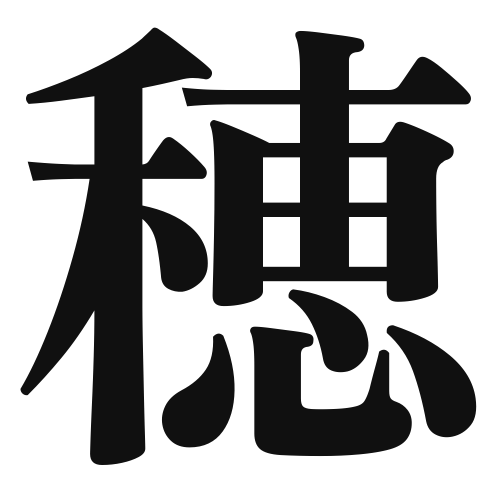1. Overview of Meaning
The kanji “穂” (ho) refers to the ear or spike of grain, particularly in relation to rice and other cereals. It symbolizes the productive part of plants that bear seeds, representing abundance and harvest.
2. Formation and Radical
Formation of the Kanji: The kanji “穂” is a compound character (会意文字) that combines elements representing rice and the concept of a spike or ear. The left part “禾” (he) signifies grain or rice, while the right part “ホ” (ho) is a phonetic component.
Radical: The radical for “穂” is “禾” (he), which is commonly associated with plants and grains.
3. Examples of Usage
Common Words and Phrases:
- 穂先 (ほさき, hosaki) – the tip of the ear of grain
- 穂稔 (ほねん, honen) – the ripening of grain
Example Sentences in Daily Conversation:
- この田んぼは穂がたくさん実っています。 (Kono tanbo wa ho ga takusan mitotteimasu.) – This rice field has many ears of grain growing.
- 穂が出る時期は、収穫の準備を始めるサインです。 (Ho ga deru jiki wa, shūkaku no junbi o hajimeru sain desu.) – The time when the ears appear is a sign to start preparing for the harvest.
4. Synonyms and Antonyms
Similar Kanji:
- 穀 (こく, koku) – grain; refers to grains in general, while “穂” specifically refers to the ear of grain.
Antonyms:
- 枯 (かれ, kare) – to wither; represents the opposite of growth and abundance associated with “穂”.
5. Cultural and Historical Background
Relation to Japanese Culture: The kanji “穂” is deeply connected to agriculture, which has been a fundamental aspect of Japanese culture. Rice is a staple food in Japan, and the appearance of rice ears signifies the importance of harvest time.
Proverbs and Idioms:
- 「穂が出る」 (ho ga deru) – This phrase is used to indicate that something is coming to fruition or reaching maturity, often used in the context of projects or efforts.
